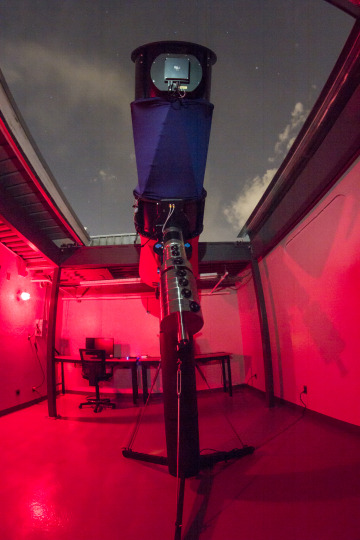
Rapid Astronomical Pointing Telescopes for Optical Reflectance Spectroscopy (RAPTORS)

The RAPTORS system was developed by five undergraduate engineering students at the University of Arizona as part of their senior design project during the 2016-2017 school year. The telescope was built with help from Starizona, a local small business and the AME machine shop on campus. Additionally, these students constructed this telescope at a fraction of the typical cost.
The primary objective of this system is to conduct a visible wavelength (0.4-0.9 µm) low resolution (R~30) spectroscopic survey of the objects in geostationary belt visible from Tucson, Arizona. The system consists of two identical 24-inch F/4 Newtonian optical tube assemblies with RAPTORS-1 dedicated to the GEO survey, and RAPTORS-2 dedicated for LEO observations (operational in 2018). RAPTORS-1 uses a Planewave HR200 Mount and is controlled using Sidereal Technologies SiTech software. The detector is an FLI Proline 16803 with a 4k x 4k 9 micron pixel chip. The combination yields a field of view of 52 x 52 arc minute with a pixel scale of 0.76”/pixel. The camera has a 10-position dual filter wheel with 50 mm square filters. The current compliment of filters include Sloan g’, r’ and i’ along with three transmission gratings from Richardson Gratings with resolution of 30, 35 and 75 lines per mm.
Nightly operations will be carried out autonomously using a Python script that controls the camera, focuser, telescope mount and the observatory roof. You can check the current weather status of the RAPTORS Nest Observatory.


